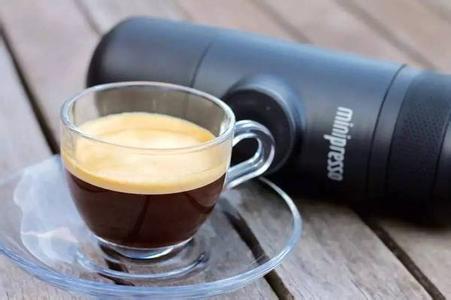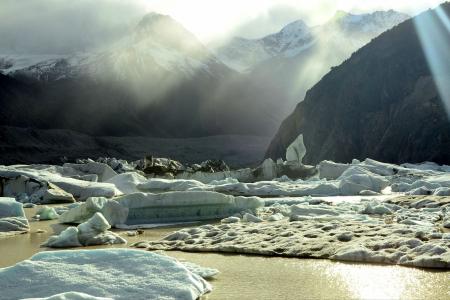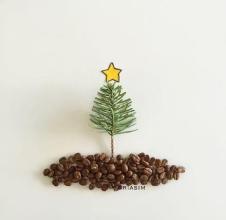Introduction to the varieties of Arabica Coffee produced by the method of Manor treatment
Introduction to the varieties of Arabica Coffee produced by the method of Manor treatment
"Arabica coffee beans" is synonymous with "Arabica".
Arabica enterprise claim
Open classification: coffee plant biological natural Rubiaceae
Arabica, (scientific name Coffea arabica, Coffee Arabica), also known as Arabica coffee, is an indigenous species of coffee grown on the Abyssinia Plateau of Ethiopia (present-day Ethiopian Plateau). According to textual research, it is the first artificially cultivated coffee variety in the world, one of the most important coffee tree species, accounting for 70% of the global coffee consumption. This kind of beverage has been cultivated in southwest Arabia for more than 1000 years. It was introduced into Europe through the Arab world in the 16th century and became a favorite drink all over the world.
Arabica coffee, also known as small-grain coffee and small-fruit coffee, is one of the most important coffee trees in the world. Its origin is Ethiopia's Abyssinia Plateau (present-day Ethiopian Plateau). In the early days, it was mainly used as medicine, and it developed the habit of baking and drinking in the 13th century. it was introduced into Europe through the Arab world in the 16th century and further became a favorite drink all over the world. Its excellent flavor and aroma make it the only coffee among these native species that can be drunk directly and alone. Because it has been monopolized by the Arab world for a long time, it is called "Arabian coffee" by Europeans. [1]
Historical Origin / Arabica Editor
In the early days, it was mainly used as medicine to eat. In the 13th century, it developed the habit of baking and drinking. In the 16th century, it was introduced into Europe through the Arab world, and further became a common favorite drink of people all over the world.
At first, all the commercial coffee in the world were small-grain coffee, but at the end of the 19th century, there was a large-scale disease, and growers began to look for other disease-resistant varieties. Small-grain coffee was still the main coffee variety in 2012, accounting for about 3% and 4% of the world's total coffee production. Arabica coffee accounts for about 65% of the world's coffee beans, with production of 48600 tons in 2012 and a total wholesale price of about $16 billion [2].
Although coffee shops are now full of variety, in the final analysis, there are only two kinds of artificial coffee, one is Arabica, the other is Coffea robusta (canephora), both of which are introduced from wild species. However, it has low resistance to drying, frost, diseases and insect pests, especially to leaf rust, the biggest natural enemy of coffee, so all producing countries are committed to improving varieties. For example, Sri Lanka, as we all know, used to be one of the most famous coffee producers in the past, but coffee farms were not spared by leaf rust at the end of the 19th century. Since then, Sri Lanka has turned to black tea, which is also the kingdom of black tea in India.
Arabica is the place of origin, Manning is the taste, slightly sour. The taste of coffee is good or bad, sometimes related to the degree of roasting. I don't drink hanging-ear coffee or instant coffee. I usually buy coffee beans online in my Italian coffee machine (low-end). Then I grind them by hand and soak them with milk without sugar. The coffee beans I have bought are mainly Italian, Blue Mountain and Manning, which is a shop in Shanghai. Italian style is very bitter, the kind you want to cry, Mantenin is a little fresh and a little sour taste, Blue Mountain is not bitter, no milk taste is good, the aftertaste has a hint of sweetness, smells very fragrant. In fact, I drink hand-ground coffee is also an entry stage, do not know much about coffee.
The name Arabica is seen in KFC and McDonald's, both of which are now introducing coffee machines to make freshly ground coffee. American coffee costs 15 yuan a cup, while mochas and lattes are slightly more expensive. In fact, beauty coffee is coffee with water, it is not good at all, ice coffee can taste better. To be honest, it may be in these two stores that I came into contact with Arabica coffee.
Later, I went to a coffee shop with a friend to chat. It was a very small coffee shop, and it didn't feel like a coffee shop at all, but his coffee used Brazilian coffee beans. I don't know how roasted it was, but it was delicious. When I checked out, I smelled his coffee beans. They were really of good quality. I really wanted to buy some at that time, but the boss was not here. I communicated with the shop assistant and said that I could not sell it, but the visual price should not be cheap, and I had a good opinion of Brazilian coffee beans from that day on.

Important Notice :
前街咖啡 FrontStreet Coffee has moved to new addredd:
FrontStreet Coffee Address: 315,Donghua East Road,GuangZhou
Tel:020 38364473
- Prev

Ratio of hand-brewed coffee powder to water-Starbucks handmade coffee rack set
The ratio of hand-brewed coffee powder to water-Starbucks hand-brewed coffee rack set compares the two tables, it is not difficult to find that the so-called enthusiasts' brewing is only slightly thicker and tastier. To put it simply, under normal circumstances, one serving of powder (10 grams) is washed into about 22 parts (220 grams) of water, while enthusiasts use one part of powder (10 grams) to flush about 160,17 parts of water (160,170g water). SCAA's coffee.
- Next

How long does it take to roast coffee beans? taste good. Roast coffee beans are concentrated.
Roasted coffee beans how long it tastes good. Roasted coffee beans are concentrated and roasted. 1. The choice of raw coffee beans is very important. The choice of raw beans directly determines the final taste of coffee. Without good quality raw beans, it is impossible to drink good coffee. Blending different coffee beans in different proportions may form a better taste than the original beans, but if you want to drink a more pure taste, you should pay attention to the original.
Related
- Beginners will see the "Coffee pull flower" guide!
- What is the difference between ice blog purified milk and ordinary milk coffee?
- Why is the Philippines the largest producer of crops in Liberia?
- For coffee extraction, should the fine powder be retained?
- How does extracted espresso fill pressed powder? How much strength does it take to press the powder?
- How to make jasmine cold extract coffee? Is the jasmine + latte good?
- Will this little toy really make the coffee taste better? How does Lily Drip affect coffee extraction?
- Will the action of slapping the filter cup also affect coffee extraction?
- What's the difference between powder-to-water ratio and powder-to-liquid ratio?
- What is the Ethiopian local species? What does it have to do with Heirloom native species?

